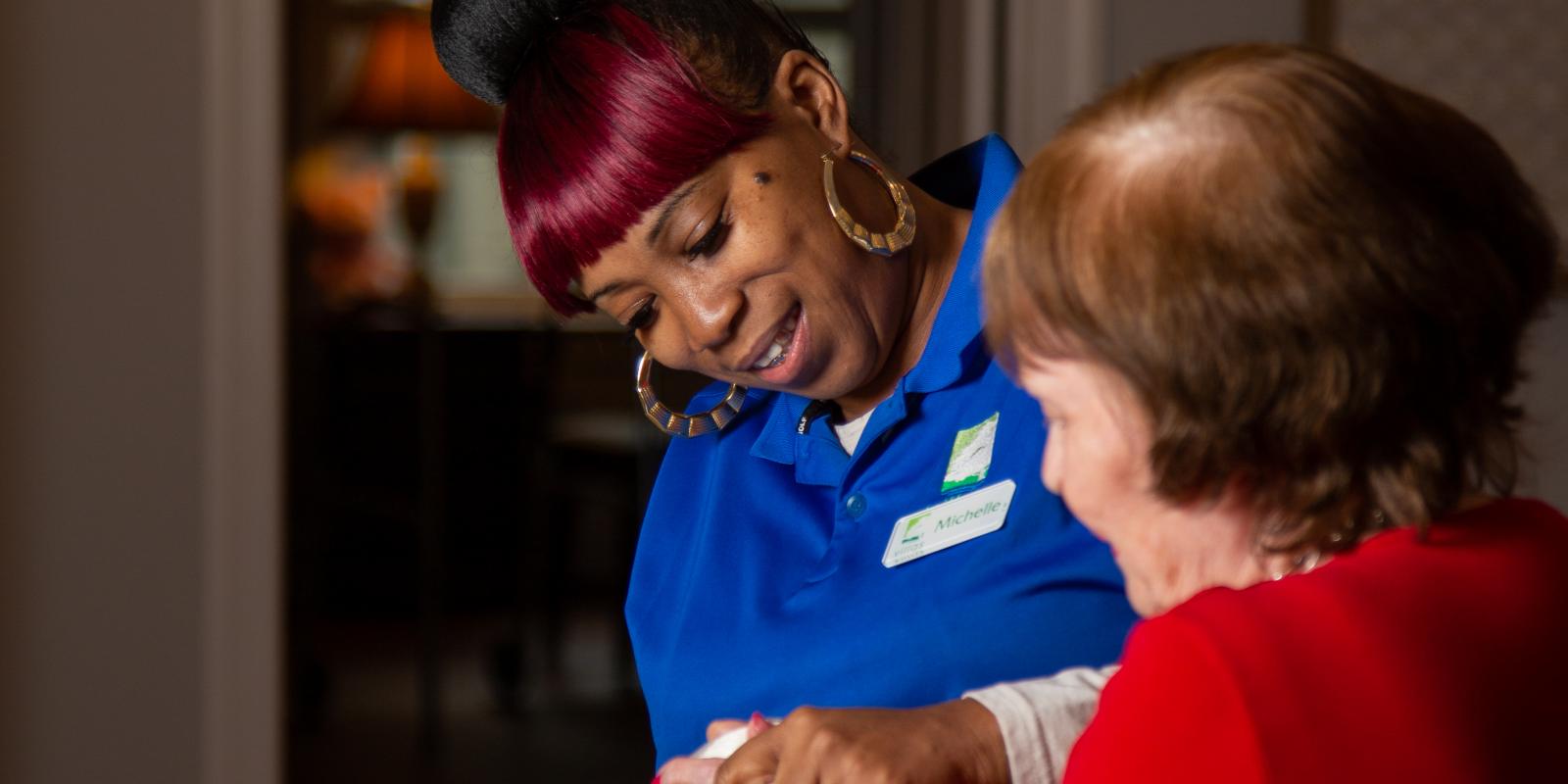Most people don’t think about direct care workers until they need one, even as they hope that when they can no longer live independently, a compassionate, qualified professional will be there when family cannot. A new report explores how direct care work is poorly understood and underestimated, even within the system that trains and regulates it.
“Since the start of the coronavirus, my job is more mentally and physically draining,” says Janet Folsom, a home care worker in Minnesota. “I just wish we had more acknowledgement, or some kind of extra incentive, to help keep us going on the really tough days so we know we’re not forgotten.”
The experiences of Folsom and other direct care workers are featured in Direct Care Work Is Real Work: Elevating the Role of the Direct Care Worker, the third installation of a yearlong series by PHI. In it, I argue that the persistently poor quality of direct care jobs is rooted in a lack of understanding about the complexities of direct care.
Direct care is the present and the future of work. It is the largest job sector in the United States, employing 4.5 million personal care aides, home health aides and nursing assistants. Between 2018 and 2028, this field will create 8.2 million jobs. Still, direct care workers—overwhelmingly women and disproportionately women of color—feel invisible. They are afforded little respect by an economy dependent upon their labor.
“If I could make a change, it would be for this field to show more appreciation for what we do,” Michelle Godwin told me earlier this year. Godwin, a nursing assistant in Florida, has worked in long-term care for two decades. “I don’t feel we get paid our worth.”
Direct care workers are paid a median hourly wage of just $12.27, and few have access to benefits, paid leave or consistent scheduling. Most have struggled to obtain personal protective equipment, even though their workplaces are among the hardest hit by COVID-19.
Attending to the daily physical and social support needs of people receiving long-term care is difficult work. I was a home care worker and, like Folsom and Godwin, know it requires considerable skill. Yet direct care work is commonly labeled “unskilled” or “low-skilled,” a perception linked to patterns of discrimination that over time have devalued the labor of the women, people of color and immigrants in this workforce.
Adding to these challenges, the patchy and outdated training infrastructure for direct care jobs fails to recognize their complexity. Certification as a home health aide or nursing assistant in the United States requires 75 hours of training, less than a nail technician. The most popular home care title, personal care aide, has no federal training standard and inconsistent regulation across states. Where standards do exist, little attention is given to the physical, emotional and social demands of direct care work, or to its contributions to health maintenance.
Many aspects of direct care, such as assisting with mobility transfers, are strenuous, demonstrated by this workforce’s high rates of injuries on the job. Workplace violence is also common.
“It is very tiresome and can really take a toll on your body,” says Godwin of her shifts at a memory care home. “We are lifting residents out of bed, helping them up if they need support walking, running around to get this test and that test done, and making sure they have everything else they need. Sometimes, I go home and my body is still in pain.”
Direct care work also requires significant emotional labor, including supporting people as they confront illness, loss of mobility, isolation and mortality. As the report details, most training regulations underplay the relational skills involved in direct care work, missing the fact that it takes place in a social context requiring communication, cultural competence and self-management skills. At a time when the risks of COVID-19 have exacerbated clients’ vulnerabilities, direct care workers are also helping them cope with unprecedented stress.
“My clients are scared, and they’re getting depressed and lonely,” says Folsom, who sees the effects of the coronavirus in home care. “I try and switch off the news if they’ve been watching 24/7 and to pick them back up and get them to a better mental place, which can be emotionally draining.”
In part because this workforce is understudied, the degree to which direct care workers support clients’ health is also poorly understood. Older adults are living with a higher prevalence of chronic conditions than ever before, and more of their care has shifted to home- and community-based settings. But direct care training standards haven’t evolved to meet these needs, offering insufficient coverage of chronic diseases, assistive medical devices and infection control, including how to stem the spread of COVID-19. Too often, workers are left to fill these training gaps on their own.
We know when direct care workers are better trained, paid and listened to, they can positively impact clients’ physical and social determinants of health and contribute to savings in health spending. But due in part to the invisibility of this workforce, we have yet to measure its impact on health and economic outcomes at scale. Lasting change in this industry will require that we all see the real work involved in direct care—and do a better job of valuing it.
Angelina Drake is the chief operating officer at PHI and author of Direct Care Work Is Real Work. She is a former home care worker and in 2018 was named a Job Quality Fellow at The Aspen Institute.
Photo (top): Nursing assistant Michelle Godwin cares for a woman in a Florida memory care facility. Photo by Kristen Blush













